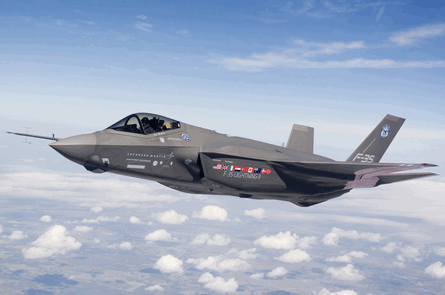The US Air Force's new leadership has moved quickly since July to dispel long-running doubts about the service's commitment to the Lockheed Martin F-35A Joint Strike Fighter.
Since the appointment of Gen Norton Schwartz as chief of staff in July, service officials have disclosed two new spending proposals worth a combined $8.4 billion that are aimed primarily at restoring a plan to buy 110 F-35As a year from fiscal year 2013.
A leaked internal planning document, first reported last week by InsideDefense.com, proposes retiring about 300 conventional fighters early and diverting the $3.4 billion savings mostly towards buying more F-35As.
 |
|---|
© Lockheed Martin |
That proposal comes less than three months after Schwartz told lawmakers the Department of Defense would contribute an extra $5 billion to the USAF's fighter recapitalisation account, with part of the proceeds flowing to the JSF account.
"You kind of look at it and say the air force is serious here," says Doug Royce, aerospace analyst for Forecast International. "This shows they're willing to sacrifice the force size and take some risk to buy more JSFs."
Both proposals, if approved in the FY2010 spending plan, would help the USAF reach its newly stated goal to nearly double annual F-35 orders. The USAF is planning to buy 1,763 F-35As.
There have been widespread concerns among the international partners about the F-35's affordability since the USAF in 2007 reduced its annual orders for the full-rate production phase from 110 to 48.
Several international partners, including Australia, Israel, the Netherlands, Norway and the UK, are approaching major acquisition decisions involving the F-35.
Meanwhile, the USAF appears to be gambling that the benefits of buying F-35s faster will compensate for a short-term fighter shortfall caused by the early retirements of 137 Boeing F-15s, 177 Lockheed F-16s and nine Fairchild A-10s.
At his July confirmation hearing, Schwartz said the F-35 would be the centrepiece of his plan to shrink the average age of the USAF's aircraft inventory from 24 years to 15 years by 2030.
That plan requires the USAF to raise its combined aircraft purchases a year from 115 to 165, which is roughly the same amount as the planned increase for the F-35A programme.
It remains unclear how much of the $8.4 billion spending package would be devoted to the F-35 programme and even how much impact that would have. Currently, the USAF plans to spend $5 billion in FY2013 to buy 48 fighters, or roughly $104 million per aircraft.
Richard Aboulafia, a Teal Group vice-president, also noted that savings from operations and maintenance budget rarely flow into procurement accounts. Another flaw with the USAF's plan is potential opposition from Congress, which typically opposes aircraft retirements.
"They like jobs, and they like force structure," Aboulafia says. "I think it's prudent to expect air force F-35A procurement to stay at about 48 a year. But the big variable is added funding for F-22s. That, of course, would largely come out of F-35 funding, which probably helps explain the air force's desire to bolster the F-35."
Source: Flight International























